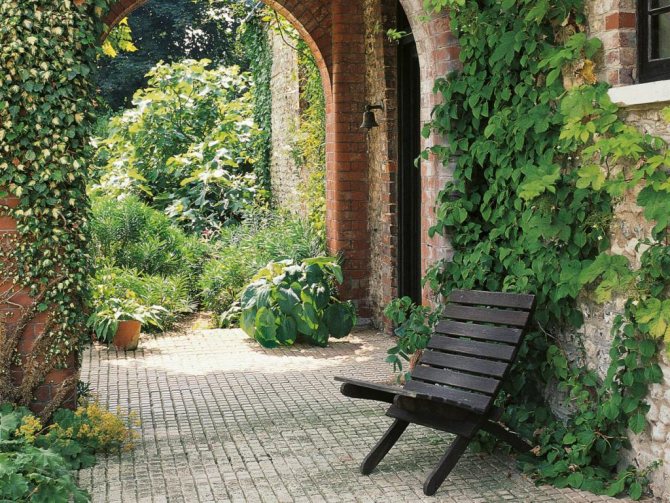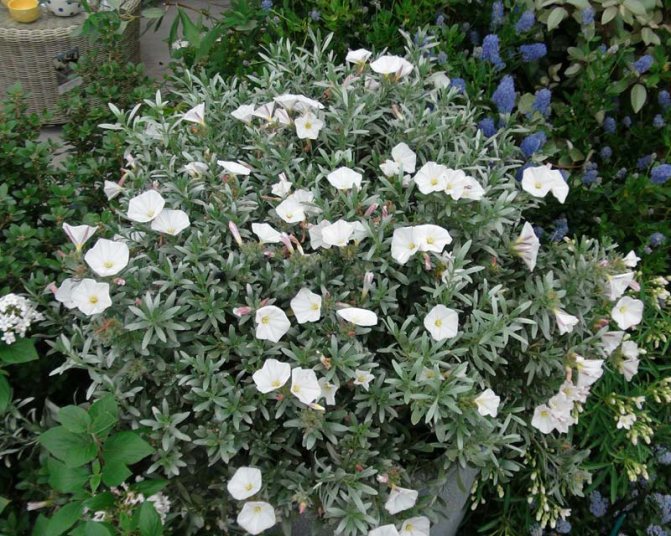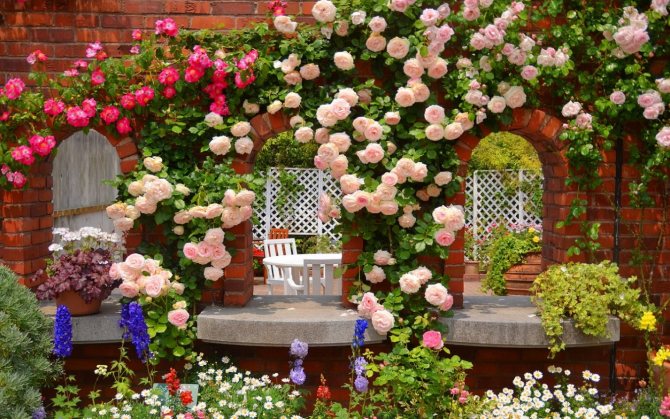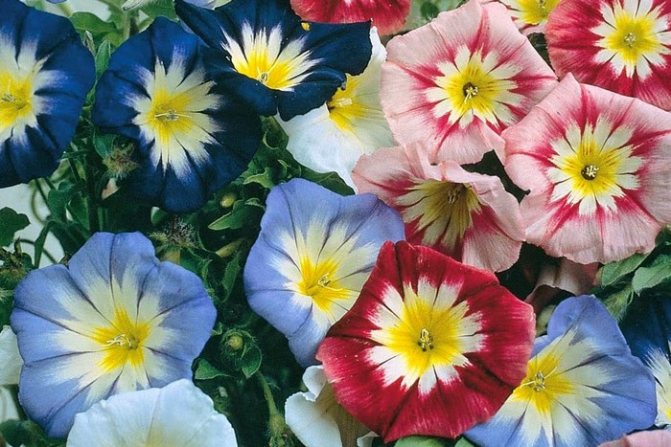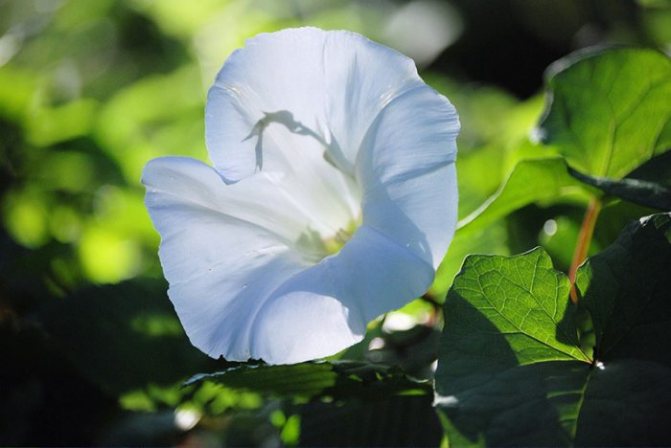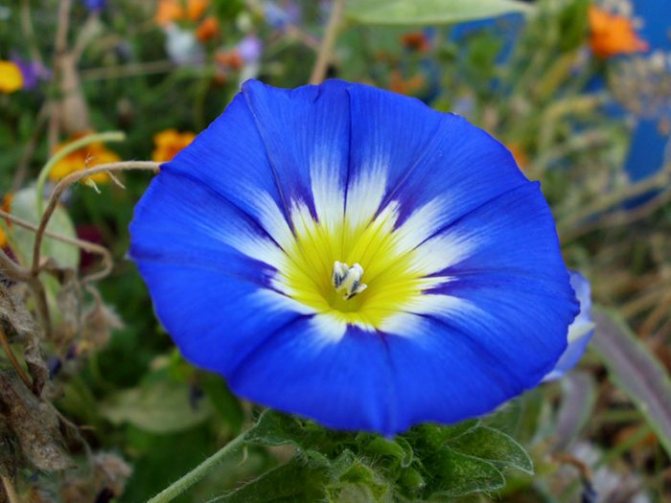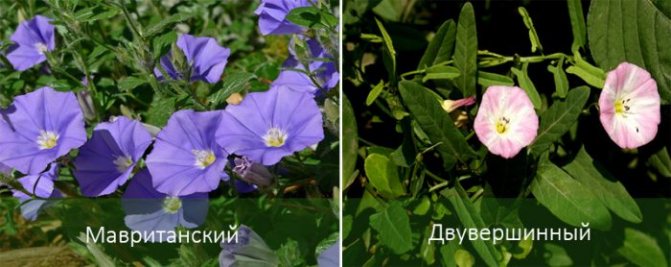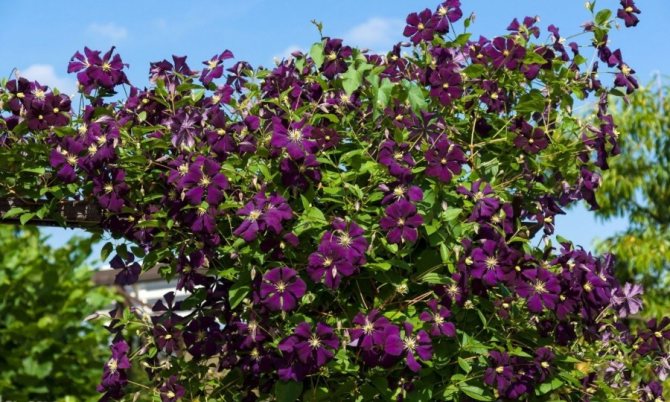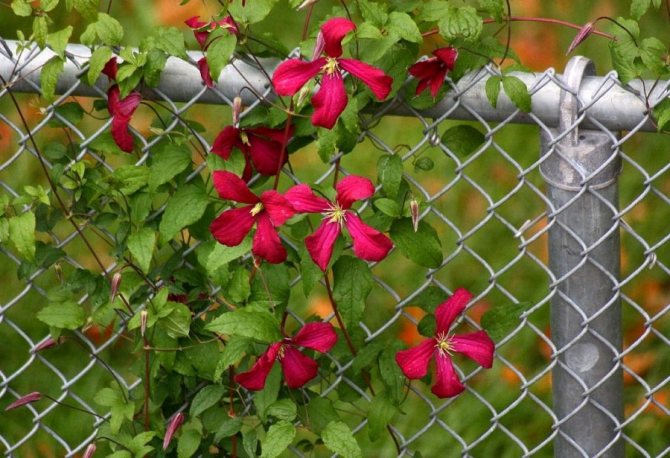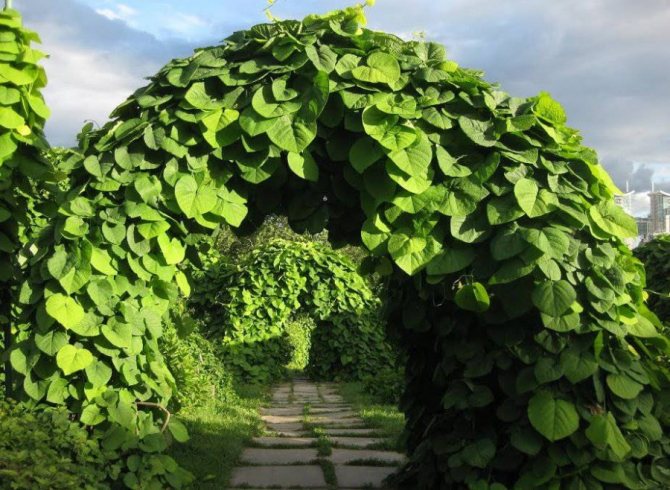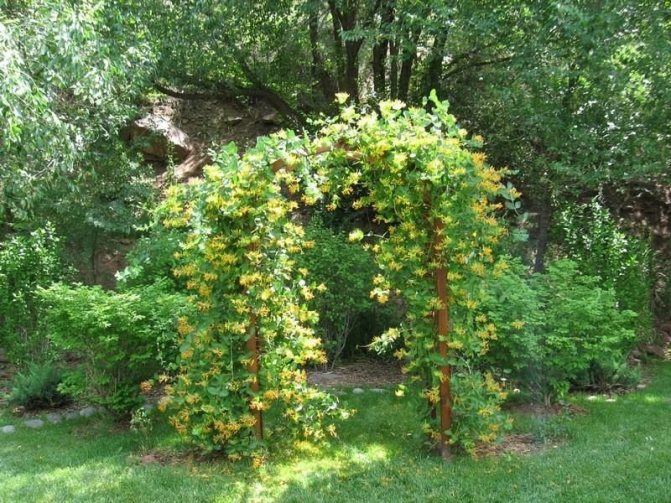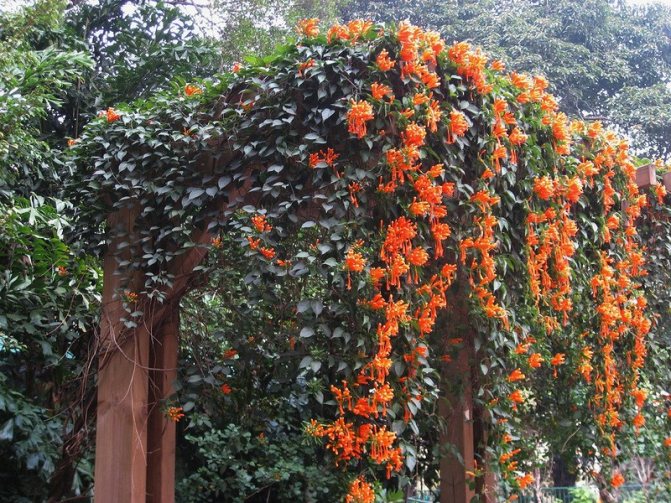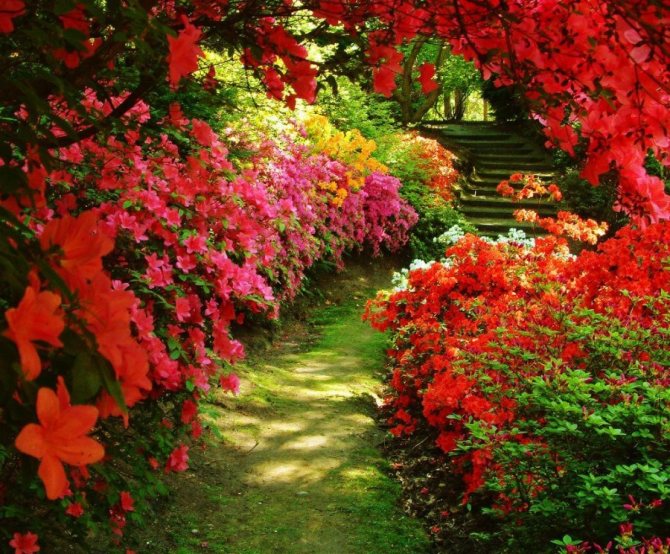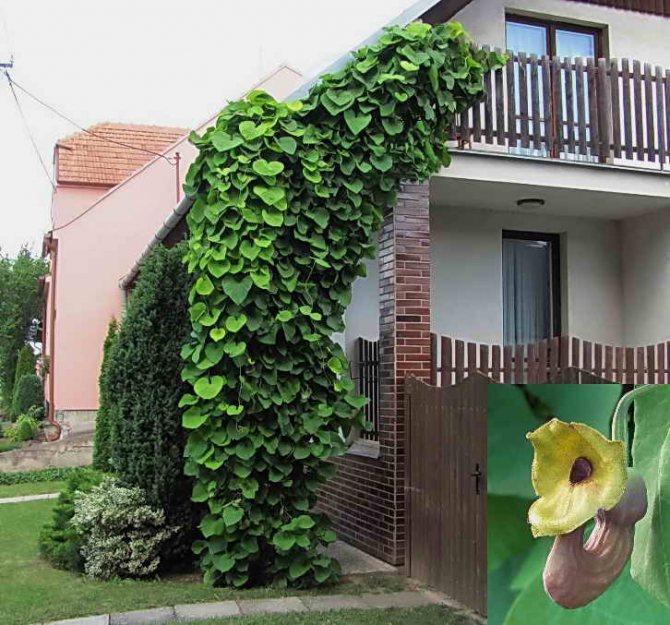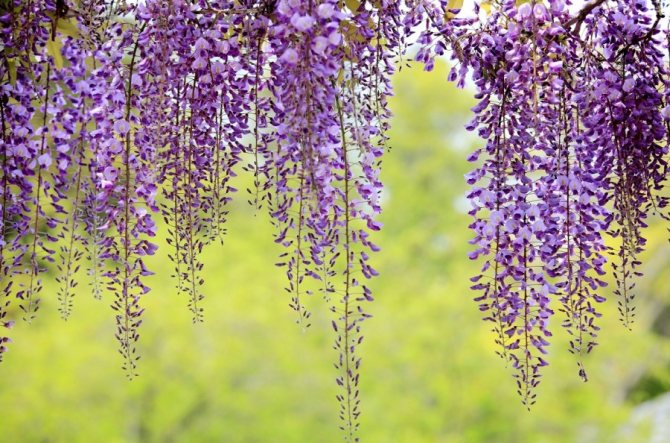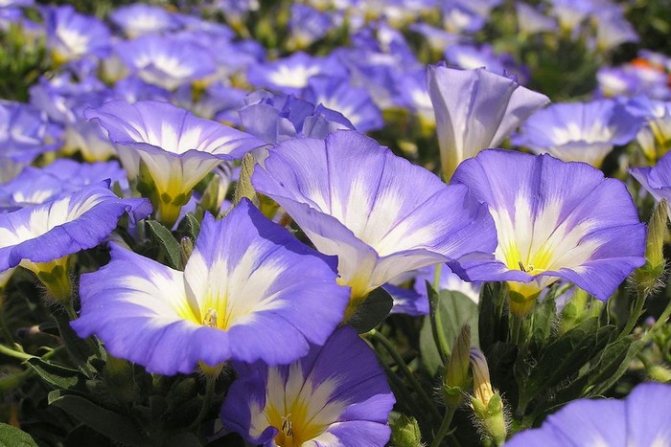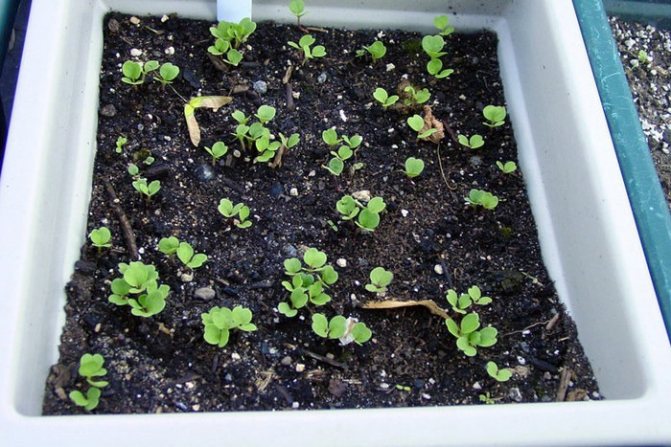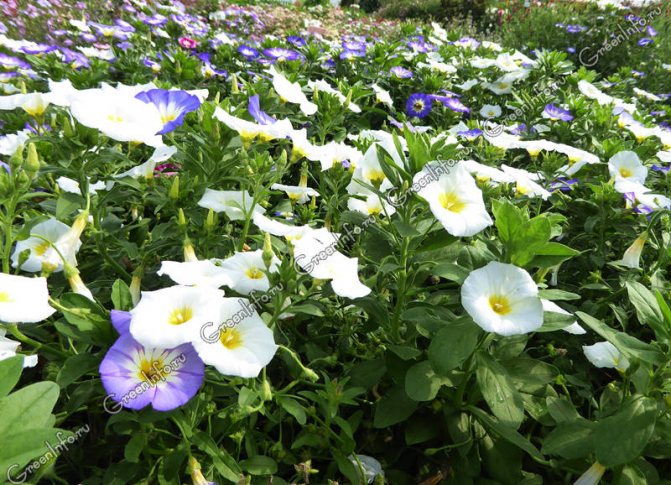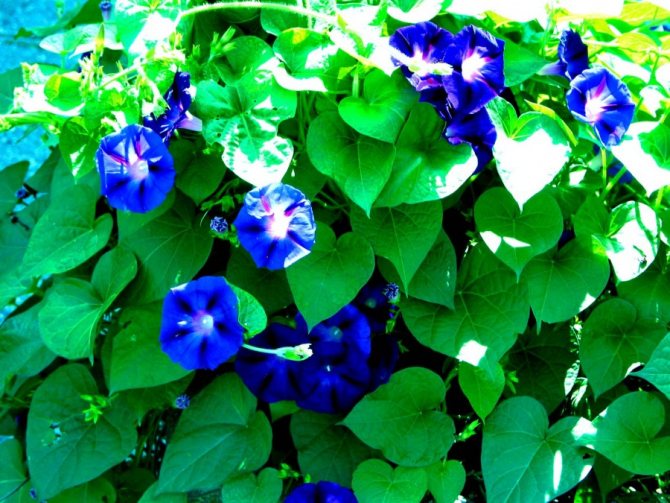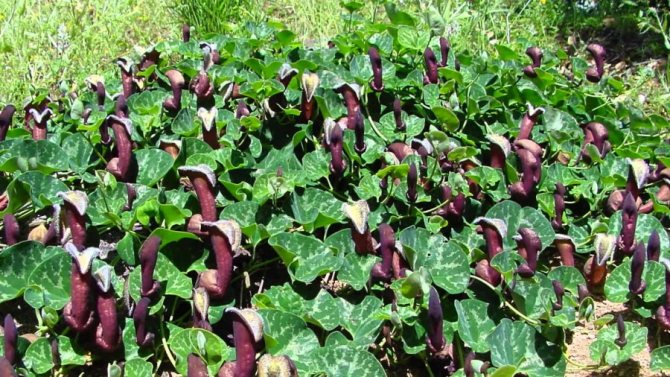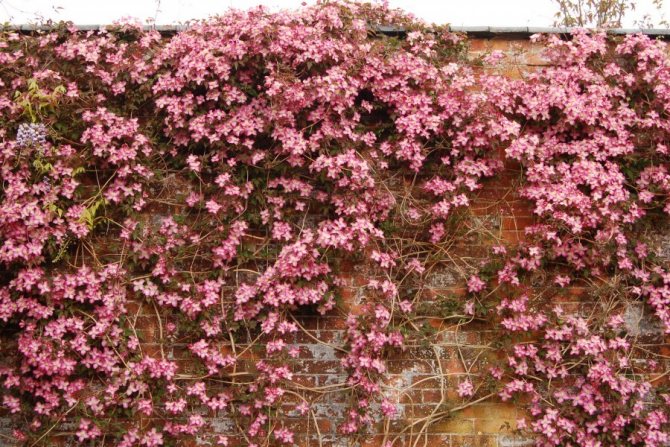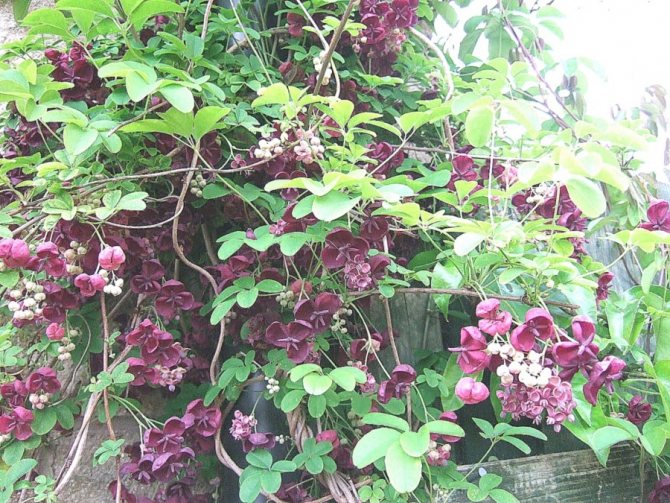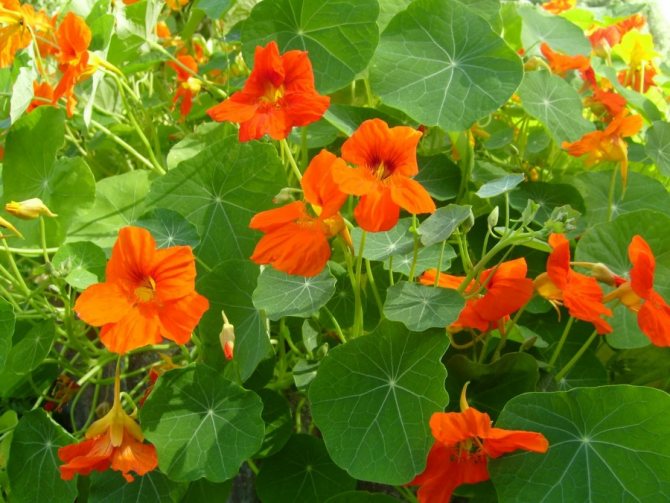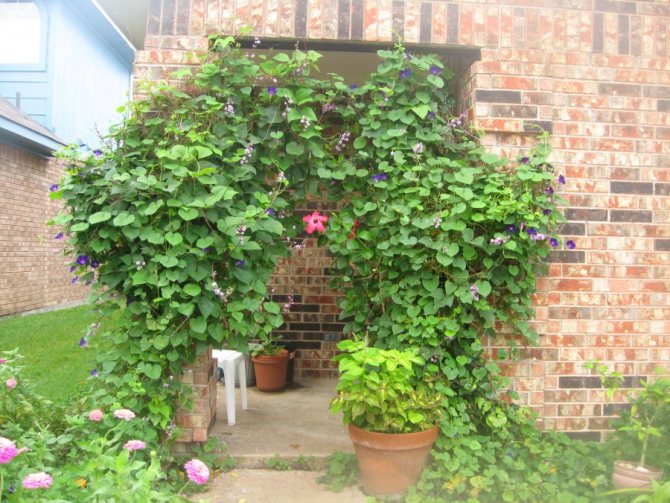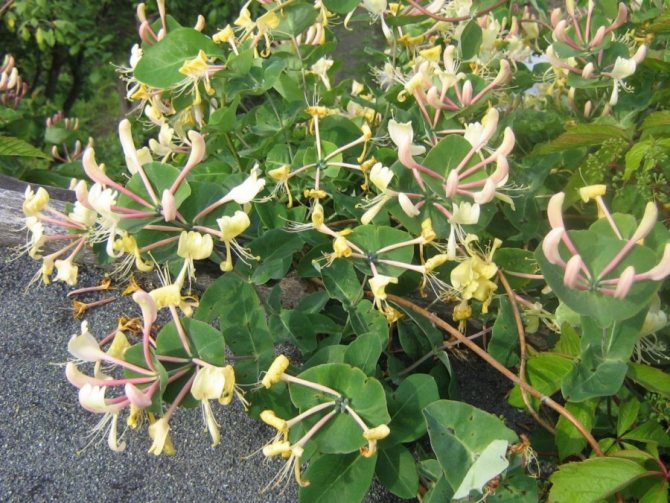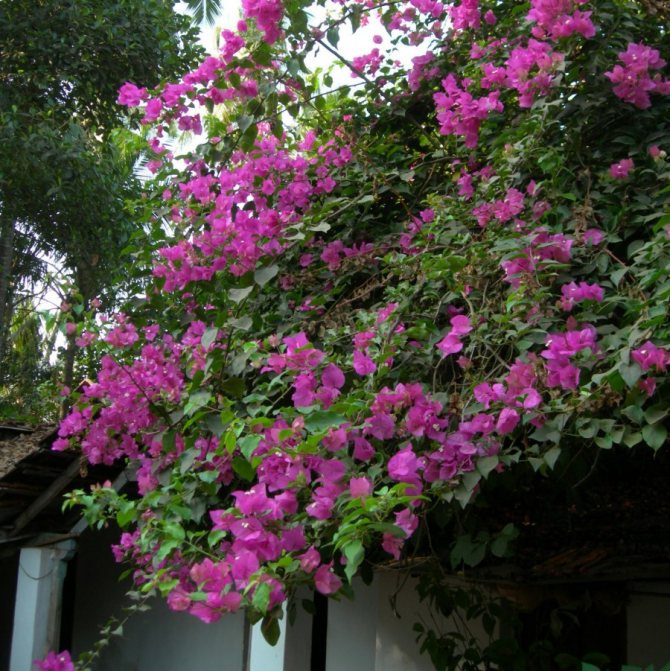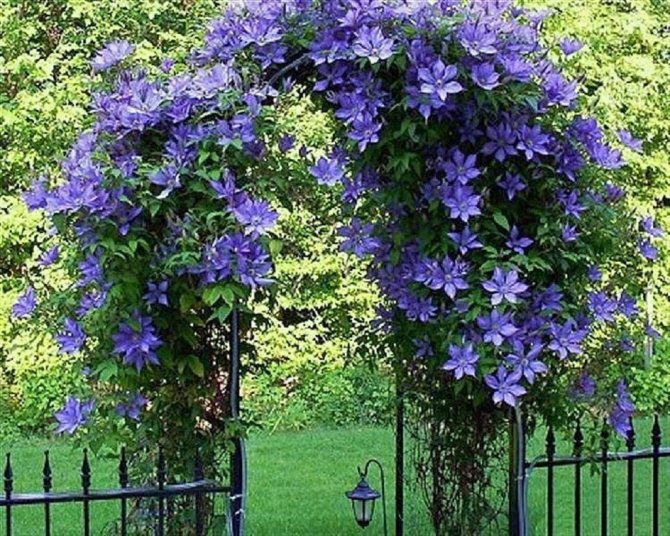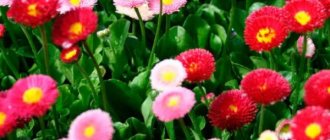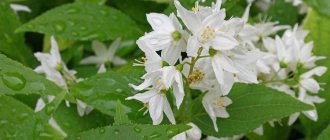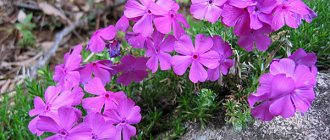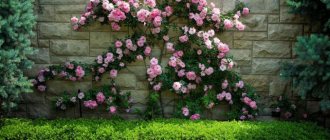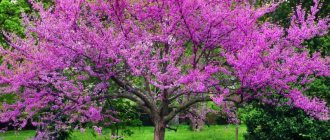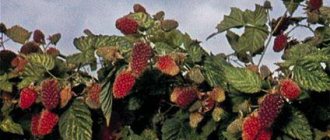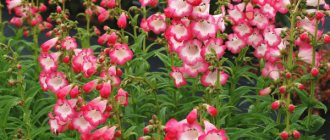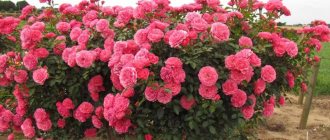Tricolor bindweed (Convolvulus tricolor) at first glance in flowers is very similar to purple morning glory (see Purple morning glory), but no matter how close the pictures on the seed bags are, these are two different plants. Bindweed tricolor has completely different leaves and is much shorter. And besides, it does not curl, although the Latin name Convolvulus comes from convolvere, which means "to wrap around." If the morning glory easily climbs along the supports, then the stems of the tricolor bindweed are rarely more than half a meter, they lie at the base and rise, and at the top they grow straight, bringing elegant gramophone flowers to the sun.
Bindweed tricolor Tricolor
Tricolor bindweed (Convolvulus tricolor) is one of 72 species of the genus Convolvulus of the bindweed family. Its second name is small bindweed (Convolvulus minor). Comes from the Mediterranean (Spain, Portugal, Balearic Islands, Italy, Sicily, Greece; North Africa). Grows on arable land, dry open areas, sandy soils and roadsides.
As an ornamental plant, it has been cultivated for a long time, since 1629.
This is a dense annual plant with a height of 20-50 cm, although in warm regions it can be a short-lived perennial - it remains where the winter temperature does not drop below -10 ° C. It has a short creeping rhizome, from which thin, filamentous roots extend. The stems are branched, numerous, like the leaves, they are covered with thin whitish bipartite hairs, slightly rough to the touch. Leaves are alternate, sessile, 6-10 cm long, obverse-lanceolate or spear-shaped, pointed at the apex, whole-edged. Flowers are arranged one by one in the axils of the upper leaves on long pedicels curved at the ends. The calyx is five-part, with oval-pointed hairy teeth. The corolla of the flower is three times the calyx, funnel-shaped, pentagonal, up to 3-5 cm in diameter, most often tricolor - blue, blue or violet, with a star-shaped unevenly serrated white center and a yellow neck. Blooms profusely throughout July-August. The fruit is a dry capsule containing two brown triangular seeds, up to 0.3 cm in diameter.
Flowers are open only in the sun, fold at night and in cloudy weather. The life of each individual flower is ephemeral, only one day, but so many flowers are formed that flowering does not stop until autumn.
Description and features of the bindweed
It is a perennial or annual herb or shrub. It reaches a height of 4 m, has creeping or erect stems, a creeping root system with filamentous roots.
Whole, alternate leaves are located on petioles. They are arrow-shaped or heart-shaped, with teeth or divided into blades.
Flowers are arranged singly or in inflorescences in the axils of greenery. Their shape is funnel-shaped or bell-shaped, while the blades are poorly expressed. Opens petals in the early morning, only in clear weather.
After flowering, fruits begin to form. These are capsules containing seeds. They retain their germination capacity for 2-3 years after harvest.
Popular annual loaches for giving
The best species of loaches, hardy and recognized are the following plants:
Various varieties of morning glory. Farbitis, or purple morning glory, develops violently, stretching up to 4 meters, quickly braiding the support and forming a dense green carpet interspersed with flowers - "gramophones" of delicate pink, white or lilac-violet shades. Ipomoea blue, similar to farbitis, has bright blue inflorescences and reaches 2-3 meters in length. Ipomoea tricolor is considered the brightest in color of flowers of this genus. Its pink-red or blue-purple flowers are extremely decorative.Note that there are a lot of varieties and species of morning glory, and we have listed only a small part of them.

Ornamental beans are a fast growing crop that blooms beautifully and produces edible fruits that can be harvested in August.
Sweet pea is one of the most popular climbing plants used in vertical gardening, arbors, balconies and loggias. The excellent aroma of peas, coupled with the exquisite structure of flowers and the variety of their colors, made it an ideal option for those who like frequent changes in the garden interior.
Types and varieties of bindweed
The genus includes 75 varieties, the identity of another 836 has not yet been precisely established. Only some species are widespread in Russia.
Field
Perennial or annual, reaching a length of 1-1.5 m. Flowers are small, grow along the entire smooth or fleecy stem. There are various colors: more often snow-white or pinkish, less often blue, blue or violet. Flowering period: from the second decade of spring to frost. Reproduction takes place by seeds or root suckers.


Usually field bindweed (ordinary) is destroyed in gardens and summer cottages, because it grows very quickly and entangles other crops, taking away their vitality. However, it also has benefits that not everyone knows about. Plants planted in the neighborhood are less likely to be affected by mold or mildew. Also, a good mulch can be obtained from the field bindweed.
The plant also has healing properties. It perfectly helps with pathologies of the kidneys and liver, treats diseases of the respiratory tract, cleanses the circulatory system.
Garden
A distinctive feature is the variety of contrasting and bright colors. A flowering carpet can be used to decorate an unsightly slope on a site, an empty space or an alley. Also, garden bindweed is used to decorate borders, create partitions. They can separate one part of the site from another, shade the rest of the culture. Popular varieties:
| Name | Description | Flowers |
| Mauritanian | Up to 0.5 m. Usually grown in containers or hanging pots. The foliage is grayish-malachite color. | Light lilac. |
| Bimodal | Up to 0.4 m. In the wild, it can be found on mountain slopes, sandy shores of reservoirs, in the steppes. Stems are creeping or slightly erect. Arrow-shaped plates, glabrous or pubescent. | Singles, pudding. |
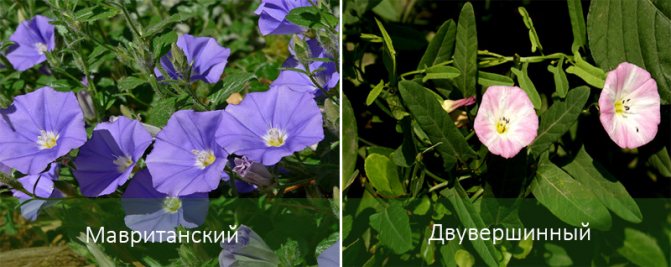

Tricolor
Exotic decorative liana up to 0.5 m in length. The foliage is gray-emerald, densely planted throughout the stem. Large flowers with wavy edges in a circle reach 5 cm.


The most beautiful varieties:
- Blue and Rainbow Flash with whitish ultramarine flowers, lemon heart;
- Royal Ensign with velvet purple petals with black tint;
- Crimson Monarch with vibrant crimson buds.
The tricolor bindweed is a low-growing plant with a large number of lateral shoots that give the bush the shape of a sphere. This variety looks spectacular in containers on terraces, loggias, window sills, balconies.
Curly greens
You can decorate a fence or a wall of a building with perennial green twining plants that do not bloom and do not bear fruit, but at the same time have leaves of an original, decorative shape and color. Among these green beauties, ivy and wild grapes should be distinguished.
Ivy
The most famous variety of ivy is "Ordinary". It is highly resistant to severe winter frosts, so it is preferred by flower growers in the northern regions. The plant is shade-tolerant. The length of its lianas is up to 30 m. Ivy "Ordinary" will easily decorate the high walls of buildings.
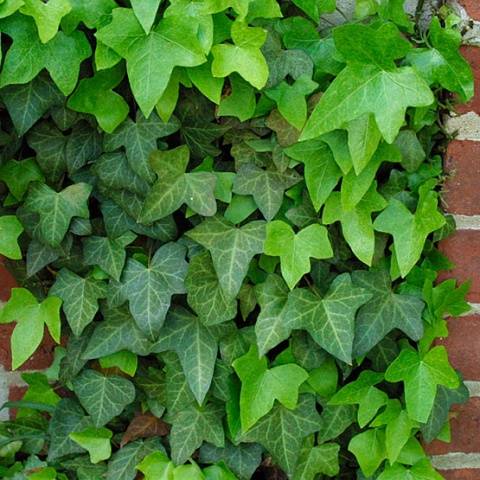

Ivy varieties "Tornado", "Modern Times" have a high growth rate. Long vines of these varieties cover large areas of vertical supports with dense greenery in a short period of time.Pruning of a climbing crop must be carried out to shape. The plant does not require special preparation for the winter season.
Maiden grapes
The predominant feature of wild maiden grapes is purple leaves. The lianas of this plant reach 20 m long and are able to soon fill large areas.
There are more than 10 varieties of this plant. All of them are undemanding to the composition of the soil, are resistant to pests and are not susceptible to diseases. The maiden vineyard gratefully responds to the application of top dressing with the abundant growth of green mass. It is necessary to form bushes of wild grapes by removing excess shoots. Preparation of plants for winter is not required.
Important! The maiden grape blooms with inconspicuous, barely noticeable flowers and bears fruit with berries of bitter taste.
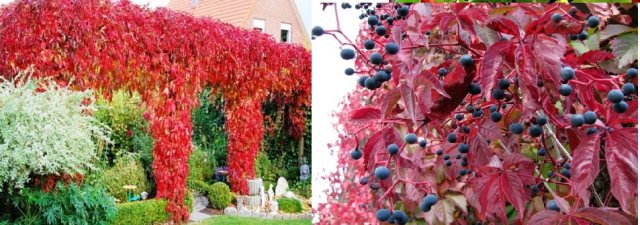

Growing bindweed from seeds
The flower is propagated only by seeds. They can be sown directly into an open area or planted on seedlings. Indoor pre-growing from seed is preferable, so the bush will grow faster and bloom more profusely.
Seedlings are sown in March:
- Leave the seeds in water for a day.
- Place in separate containers of potting soil for flowering plants. It is undesirable to land in common containers, because bindweed does not tolerate transplanting well.
- Bury the seed and cover it with a thin layer of earth.
- Keep the pots at + 18 ... + 20 ° C.
- Apply mineral fertilizers. Water regularly to keep the soil from drying out.
- The first shoots will sprout after a couple of weeks.


Benefits of vertical gardening
Recreation areas of climbing plants in suburban areas are becoming more and more popular, occupying a niche of the once irreplaceable vegetable beds. Such corners are decorated with curly flowers for the garden.
Annuals have a number of benefits:
- Annual vines easily propagate by sowing in the ground or through self-grown seedlings;
- Economical - seeds of climbing annual flowers are much cheaper than seedlings of perennials;
- Fast-growing - climbing annuals that sprout from seed in spring will be able to braid an unsightly farm building or fence in a few weeks of summer. Curly flowers will serve as an original screen on the balcony of a high-rise building;
- Lianas are a convenient material for landscape design: in a short time, they can be used to create interesting compositions, placing annual curly flowers near trellises, arches, pergolas, walls, fences;
- The uniqueness of compositional solutions: the plantings vary every year, creating new multi-colored living pictures from other climbing annuals;
- They give an aesthetic pleasure: all annual creepers create harmonious green verticals with a lush carpet of leaves, and then the performance is complemented by a riot of flowers of colors.
For some gardeners, the short life span of climbing annuals may seem like a disadvantage, as well as working with them: seedling, weeding, watering. But the man-made beauty of climbing plants rewards.


Planting bindweed in the garden
Before planting, the seedlings must be hardened. To do this, she is taken out on the street every day, starting at 10 minutes, gradually increasing the time of "walks". Thanks to this, the bindweed will have a stronger immunity, it will be able to resist various diseases.
Landing dates
Landing is carried out after the snow melts, when the risk of frost return disappears. This usually happens in mid-May-early June.
Landing technology
It is necessary to choose a sunny place. Only in this case it will bloom magnificently and for a long time. The flower is unpretentious to soil mixture, but grows better on a permeable, loamy substrate. Landing takes place as follows:
- Dig a site with peat (2-3 kg per 1 sq. M).
- Level the ground surface.
- Transfer the plants to the holes located at a distance of 20-25 cm from each other using the transfer method. Water the seedlings before transplanting (it will be easier to remove the bushes from the pots).
- Moisturize liberally.
Perennial garden vines
The most popular perennials are:
Knyazhik is a small woody liana with carved leaves on long stalks and single white flowers. This loach is a plant adapted to life in the most difficult climatic zones, frost-resistant and reaching a height of three meters. The prince creates a magnificent decor for fences and fences.


Clematis is a decorative liana with large inflorescences reaching 15-17 cm in diameter. Blooming clematis is an impressive sight, it can make a recreation area a unique oasis, and turn an ordinary gazebo into a fabulous cave.
Chinese lemongrass is an amazing plant with high decorative and medicinal properties. This loach is a plant with a sturdy woody stem, small light flowers and a surprisingly pleasant aroma. In places of growth in the Far East, this liana reaches 15 m, in temperate and northern latitudes - 4 m.
Actinidia is a woody loach shrub that perfectly masks flaws in walls and fences.
Hops is a herbaceous loach, a plant with a strong stem, unpretentious and strong, capable of twisting around any support in the shortest possible time. Most often it is used to decorate arches, fences, walls of household buildings that need to be hidden.
The grapevine is another type of lianas that combines excellent decorativeness with the undoubted benefits of fruit. Grapes are grown on wooden or plastic mesh structures.
All of the listed loach plants are ideal for picking, separating zones or decorating the garden landscape, but this does not limit the possibilities of these unique crops. Many of the vines decorate our homes, bringing in them a unique flavor and organically fit into the home interior.
Bindweed care
Planting and further caring for the plant is simple. It is enough to fulfill some requirements:
| Criterion | Recommendations |
| Watering | Regular and plentiful. With a lack of moisture, the flower will shed its petals. When moistening, make sure that no liquid stagnation occurs. Because of this, a fungal infection can begin to develop. |
| Top dressing | When growing slowly, add wood ash or fertilizer for flowering plants. For example, Nitrofosku, Agricola. |
| Weeding | In the first 2-3 weeks after planting. When the bushes are strong, they will be able to suppress the weeds. |
| Formation | It is necessary to create a support so that the bindweed can braid it with active growth:
When the flower grows in the wrong direction, prune it. |
After flowering
In Russia, it is grown as an annual plant. Therefore, in the middle of autumn, it must be dug up with the rhizome, and the site must be dug up. Since the flower has the ability to self-sowing, in the next season new specimens will begin to form in the same place.
Why do we need supports
Curly annuals for the garden are chosen, creating cozy shady corners in open areas, comfortable gazebos. You need to know that not all annual vines can climb themselves vertically. Some climbing plants will need support. A green flowering carpet will be placed wherever it is directed. The curtain of annual climbing plants will soon cover the unassuming support.
Curly flowers climb up in two ways.
- Some, like various types of ornamental beans and sweet peas, cling to the supports with tendrils;
- Morning glory, bindweeds twine with a stem around a support.
Soft nets and wires are suitable for the first climbing plants.Accordingly, for other vines of annuals, it is necessary to arrange thin, rigid stands, to which the stems of climbing plants must be tied.
Advice! The main requirement for supporting curly annuals is structural strength. The structure must bear the weight of the greenery and withstand possible strong gusts of wind and the pressure of downpours.
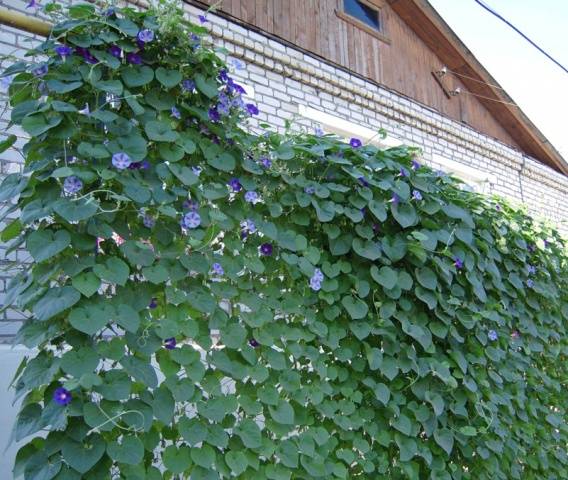

Creation of supports
Supports serve as a kind of launching pad for curly flowers. Annuals immediately begin to grow intensively and climb up if they find support.
- When establishing a support, it must be borne in mind that some climbing plants can rise up to 3 m in height or even more under favorable conditions for growth;
- On wooden buildings, nails are hammered in and a net with large meshes, ordinary fishing line or strong threads are pulled;
- For curly flowers planted in an open space, it is necessary to build a lattice, put a metal mesh on strong posts, pull a wire or twine to a fixed crossbar;
- Craftsmen make pyramidal structures from willow;
- They build arches, pergolas, arrange metal trellises.
A warning! In the climate of the middle zone, rare flowering climbing plants, annuals are often low and with a long period before flowering.
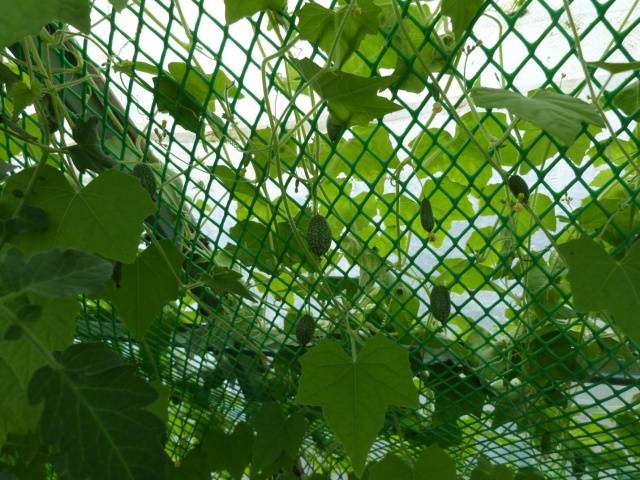

Diseases and pests
Bindweed is a sturdy plant that is rarely affected by diseases and insects. Sometimes, in the absence of proper care, the flower gets sick with powdery mildew. It can be identified by the following criteria:
- White powdery spots with fungal spores. After a while, they begin to secrete liquid droplets that resemble dew.
- Early fall of petals.
- Foliage curling and wilting.
- Stopping development.
The disease most often occurs with care errors:
- high humidity;
- defeat of aphids;
- excess nitrogen in the soil;
- excessive planting density.
Spores of the fungus can also get into the water during watering or from other plants downwind, through a person or non-disinfected instruments.
With a strong defeat, the flower dies, in the initial stages of the disease it can still be saved:
- Remove affected areas.
- Spray with soda ash (2-3 g per 1 l of water) or a soap-copper solution (25 g of green soap and 2.5 g of copper sulfate per 1 l of liquid).
- Treat the bush itself, containers, soil with Vitaros, Fundazol, Topaz, Hom or other fungicides.
Occasionally, aphids begin to live on the bindweed. A pest insect can be recognized by the following:
- wilting of young leaves and buds;
- dark spots (punctures from the proboscis);
- syrupy liquid on the aboveground part;
- the appearance of ants near the plant (they are attracted by sticky mucus).
You can destroy the insect in the following ways:
- wipe the aboveground part with a rag soaked in soapy water;
- purchase the larvae of red ants or ladybugs in a gardening store (these are the natural enemies of the pest);
- use purchased drugs: Commander, Bankol, Vertimek and others.
Fruit
Some perennial climbing plants for the garden can delight not only with beautiful flowers, but also with fruits that you can enjoy. The most famous types of such crops are listed below.
Chinese lemongrass
This climbing plant is great for the garden. Chinese lemongrass is a perennial vine with reddish cuttings. The leaves of the plant are large, glossy. During flowering, the bush is decorated with white flowers and exudes a pleasant lemon scent. In autumn, the leaves of the plant turn yellow. Lemongrass bears fruit, red sour berries, which form clusters.
Important! The berries of the Chinese magnolia vine have a healing effect.


Actinidia
This plant is called the hardy kiwi. There are male and female varieties of actinidia. In order to get the fruits of this unique culture, two different-sex seedlings should be planted at the same time.
The vines of this perennial plant are tree-like, with a height of 8 to 15 m, they need support, which can be a growing tree or an artificial trellis nearby. Actinidia berries are similar to miniature kiwis. Their diameter is 2.5-3 cm. The taste of the berries resembles a gooseberry.
The most popular male actinidia varieties are Adam and Veiki.
Important! Variety "Adam" has original variegated leaves, which are painted in pink-green color.


Among the female varieties of actinidia, Vitacola and Scarlet are well-known. The color of their fruits is green and brown-red, respectively. You can see the berries of these varieties below.
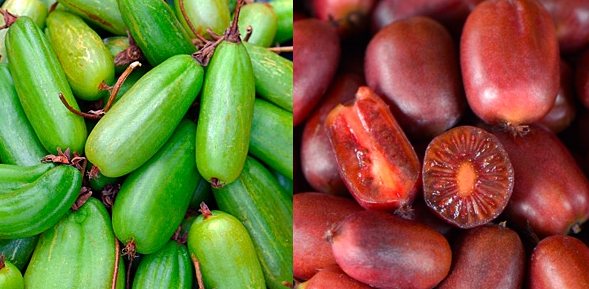

When choosing a climbing fruit plant for your garden, you should also pay attention to the various grape varieties that will delight you with lush green foliage, beautiful flowers and delicious grapes.
Among the frost-resistant grape varieties, it is worth highlighting "Kristall" and "Levokumsky". These plants will not only survive the harsh, frosty winter without any problems, but also will not cause much trouble in the growing process. In gratitude for the minimal care, the grapes of these varieties will generously reward them with an abundant tasty harvest of berries.
Mr. Dachnik informs: how to get rid of the field bindweed
Wild bindweed can be a problem for your garden. Twisting around other plants, he strangles them, does not allow them to grow normally.
A fast growing weed must be destroyed while it is still young. It must be completely pulled out without leaving roots in the ground. New shoots can begin to form from them. Carefully collect all parts of the plant so that the seeds do not crumble and burn. If this does not help, then it is advisable to use poisonous drugs: Linder and others.
In order to further avoid unwanted bindweed growth, in the springtime, dig up the entire earth, destroying the remnants of the roots. After that, cover the area with material that does not allow light and air to pass through. In such conditions, the remaining parts of the plant will die. Siderates also help against unwanted weed growth. For example, white mustard.
What to consider when choosing a flower
Before you purchase planting material and start preparing the site for planting, you should think about the main points that are important for growing climbing plants:
- Specificity of culture... Depending on the botanical characteristics, creeping, climbing and clinging climbing plants are distinguished. For some types it is necessary to prepare a special support, for others only a vertical wall is required;
- Climate in the region... It is not recommended to plant exotic and thermophilic species in areas with cold and cloudy summers. For the northern regions, it is desirable to acquire hardy and resistant plants;
- Care requirements... Most curly flowers are unpretentious crops that can grow in any conditions. However, some varieties require constant pruning, feeding and other procedures;
- Landing time... All flowers for vertical planting are usually divided into annuals and perennials. Care and cultivation for them is significantly different.
In addition, flowering, tree-like and deciduous vines are distinguished. Before planting, you need to decide on a place, as well as prepare a support or trellis, if necessary. As a rule, curly flowers are planted in a group, which should be taken into account when choosing a site.
For the gardener
Field bindweed for all summer residents is a dangerous and harmful perennial weed. Only in photographs does it look like a cute and harmless plant. It develops successfully on almost any soil. There are about 190 species of these weeds, but the differences are insignificant. In general, they are quite similar. Twisting around the stem, the field bindweed suppresses and shades all useful plants, including cereals.
The fight against this plant is very difficult. Thin, threadlike creeping roots penetrate deep into the ground.And the stems branch and spread, intertwine with useful plants, which complicates the fight against the weed. But let's look at this plant from the other side. Field bindweed is used for medicinal purposes, which means that you need to consider its properties. Maybe someone will take a new look at the annoying plant and prepare it for future use for the winter.
Observations of traditional healers
We know about many plants thanks to the observation of ancestors. They lived in harmony with nature, ate and were treated by its gifts. The medicinal properties of the field bindweed have been known for a long time. It was used to treat asthma, kidney and lung diseases. Traditional medicine was based on the positive results obtained.
The first information about the properties of the bindweed has come down to us since the Middle Ages. Arab doctors used this plant quite widely as an astringent, cleaning vessel and strengthening the stomach. A detailed description of the bindweed is found in medieval treatises. Bindweed juice was used to treat jaundice, and by adding seeds to the juice, an excellent remedy for fever was obtained. Infusions and decoctions have also been used to treat cancer.
But today, modern doctors have laboratories that allow them to obtain information about the composition of a particular plant and its effect on the body. It was possible to find out that the field bindweed plant exhibits excellent antispasmodic, anti-inflammatory, hemostatic properties. It can also act as a local anesthetic. A photo of a field bindweed will allow you to recognize it in the garden without any problems.
Before using, do not forget to study the medicinal properties of field bindweed and contraindications. This is a poisonous plant and, despite the fact that the concentration of toxins is low, it is prohibited for use by pregnant and lactating women. In case of individual intolerance to the components or allergic reactions, it is also necessary to choose an alternative.
- An ointment based on fresh plant juice and butter is used for pneumonia and otitis media.
- Decoctions work great with all kinds of skin diseases: rashes, lichen, scabies.
- For toothache, make an infusion from the root. To do this, pour a spoonful of crushed root with a glass of boiling water and leave for 20 minutes. You need to rinse your mouth with this composition twice a day.
- For the treatment of chronic diseases of the bladder, you need to take in equal amounts the herb of bindweed, yarrow, lingonberry leaf and bearberry. Mix everything well. Take two tablespoons of the collection and cover with three cups of boiling water. After two hours, you can strain and drink a glass three times a day.
- For asthma, it is best to use fresh herb. You need to take a tablespoon of well-chopped herbs and pour a glass of boiling water. After an hour, you can drain. Divide the resulting raw material into 4 parts and drink during the day.
General characteristics
In nature, a birch can be found in your garden. It resembles a miniature liana. By the way, the Latin name of the loach means "roll up" or "wrap", which very accurately conveys the nature of the plant. The stems and rhizomes resemble thin cables that masterfully twine around any structure: alive or not. The question of what a bindweed looks like should be answered with a description of each of its parts separately:
The value of this culture also lies in the fact that it has many colors. As shown in the photo, the bindweed is one-color, two- and three-color. The dominant shades of these "European vines" are:
Loaches begin to bloom from the end of spring. As a result, you can admire the splendor of these delicate flowers for the whole summer and until the autumn frosts.
It is necessary to grow representatives of the Vyunkov family on non-acidic and relatively moist soil. You should also provide them with sufficient lighting, or at least diffused.
Healing properties
As a medicinal plant, bindweed has been known since the time of Avicenna.The wild varieties of bindweed, specifically the field bindweed, have medicinal properties. It contains a large amount of biologically active substances, vitamins, flavonoids, ascorbic acid.
The herb infusion is used as an anti-inflammatory and diuretic for diseases of the bladder. A decoction of bindweed has a positive effect on the gastrointestinal tract, is used as a choleretic and laxative. Also, the broth lowers blood pressure, has a calming effect in case of nervous disorders. For asthma, an infusion of fresh bindweed herb is used. Diluted alcoholic tincture of bindweed treat long-term non-healing wounds with compresses and lotions.
You can prepare medicinal raw materials yourself. The whole plant is harvested during flowering, the roots are harvested in spring or autumn when digging a site. The stems are sorted out, dried leaves are removed, the roots must be rinsed well. Raw materials are dried under a canopy on a clean bedding or on paper. Ready raw materials are stored for no more than a year.
Gallery (weaving flowers)
How to use the plant
Today we are trying to destroy it with modern drugs. And in the old days, our ancestors carefully collected the birch tree throughout the season. The description of the field bindweed today causes more negativity, because this guest has to be fought on the garden plot every year.
All parts of the plant have healing properties: roots, stems and leaves. It is very rich in various biologically active substances and compounds. All parts of the bindweed contain substances such as flavonoids, convolvulin glycoside, vitamins (especially a lot of A, C and E). In addition, the composition contains bitterness and toxic alkaloids. That is why preparations with this plant must be taken carefully, carefully observing the dosage.
You can consider the rich composition of this simple-looking weed for a long time. The green part of the plant is rich in vitamin E and resinous substances, blood clotting substances, saponins and bitterness. In the fruit-boxes, or rather in the seeds of the plant, there are alkaloids and fatty oils. There are many different resins in the colors.
The genus, in which there are almost 250 species, is difficult to give a general description. Bindweed is an interesting plant. It can be grass, shrub, or dwarf shrub. Wild varieties have high winter hardiness and are less whimsical. Recently, many hybrids have been bred that require delicate care. The species diversity is great. There are evergreen varieties suitable for growing in regions with mild climates. For areas with harsh winters, deciduous species are suitable.
Root system - small roots with filamentous shoots. They are located in the top layer of the soil. Bindweed stems are erect or creeping - depending on the type of bindweed and varietal group. They are green or woody, covered with gray-green bark. The leaf plates are heart-shaped or elongated, similar to arrows. The leaves are arranged alternately, attached to the shoots with long petioles.
Bindweed blooms in summer. The tubular bud, opening, turns into a funnel-shaped flower with a wide round limb. A flower lives - no more than a day. But, in its place, new buds are quickly formed. After flowering, small boxes with seeds are formed. The planting material has a high germination capacity, which it can maintain for up to 3 years.
Please note: Bindweed seeds are often sold in stores. When buying planting material, do not forget to look at the expiration date.
Tricolor bindweed (Convolvulus tricolor) belongs to the Bindweed family, whose distribution area was originally in southern Europe.
It is a low plant with many lateral shoots. Shoots are long, flexible, ranging in length from 50 centimeters to two to three meters. The bindweed is 18-40 cm high.Sometimes the plant begins to bush.
The leaves are alternate, dark green in color. They have an oblong oval or heart-shaped shape, along the edges they can be serrated.
The flower looks like a bell or funnel, the edges of which come in different shades of blue and sometimes purple. The inner part of the flower is white with a bright yellow center. The diameter of the funnel of a flower can reach 4-5 centimeters.
Bindweed tricolor is a popular flower for cultivation primarily because it is characterized by abundant flowering. The flowering period lasts from early summer to October. Experienced growers try to achieve abundant and long-lasting flowering by timely removal of withered and faded flowers.
The fruit of the garden bindweed is a box with one or two large seeds that are brown in color.
Creeping root with thin filamentous processes.
The bindweed flower always attracts attention with its unassuming beauty, unpretentiousness and fast growth rates, and therefore is so popular in the design of any flower garden.
Bindweed is grown in sunny places where other varieties of flowers are difficult to take root. Usually they are placed in front of tall plants or among perennial varieties that do not differ in abundant flowering.
You can also use the flower on vertical trellises, special supports, and form curbs from them. It will serve as an excellent decor for fences, hide their flaws, look spectacular on decorative curly frames.
Growing a bindweed flower is not difficult - this is one of the most unassuming plants in this regard. This garden flower can also be grown as a pot culture that will decorate your loggia, balcony or greenhouse not only in the summer, but also in the winter.
Room
In a house or apartment, you can grow indoor bindweed, which was specially bred for such conditions. This variety is very moody. It cannot be kept outdoors - like a windowsill or a balcony. Direct sunlight will lead to yellowing of the leaves, as well as dry out the base of the root. In addition, the indoor birch is very fond of moisture. Therefore, it needs to be watered and sprayed regularly. You can safely bathe a young toffee in the bathroom. These procedures must be done in winter, when the air in the apartment is dry due to heating. You need to put a pot with a flowerpot in a secluded place, because drafts are dangerous for him.
If you plant a vine in a container, then it should be placed on the south side of the house or closer to the east.
Caring for these three types of bindweed - field, garden and indoor - does not require much effort. This light-loving plant will become a worthy decoration of a personal plot or terrace.


